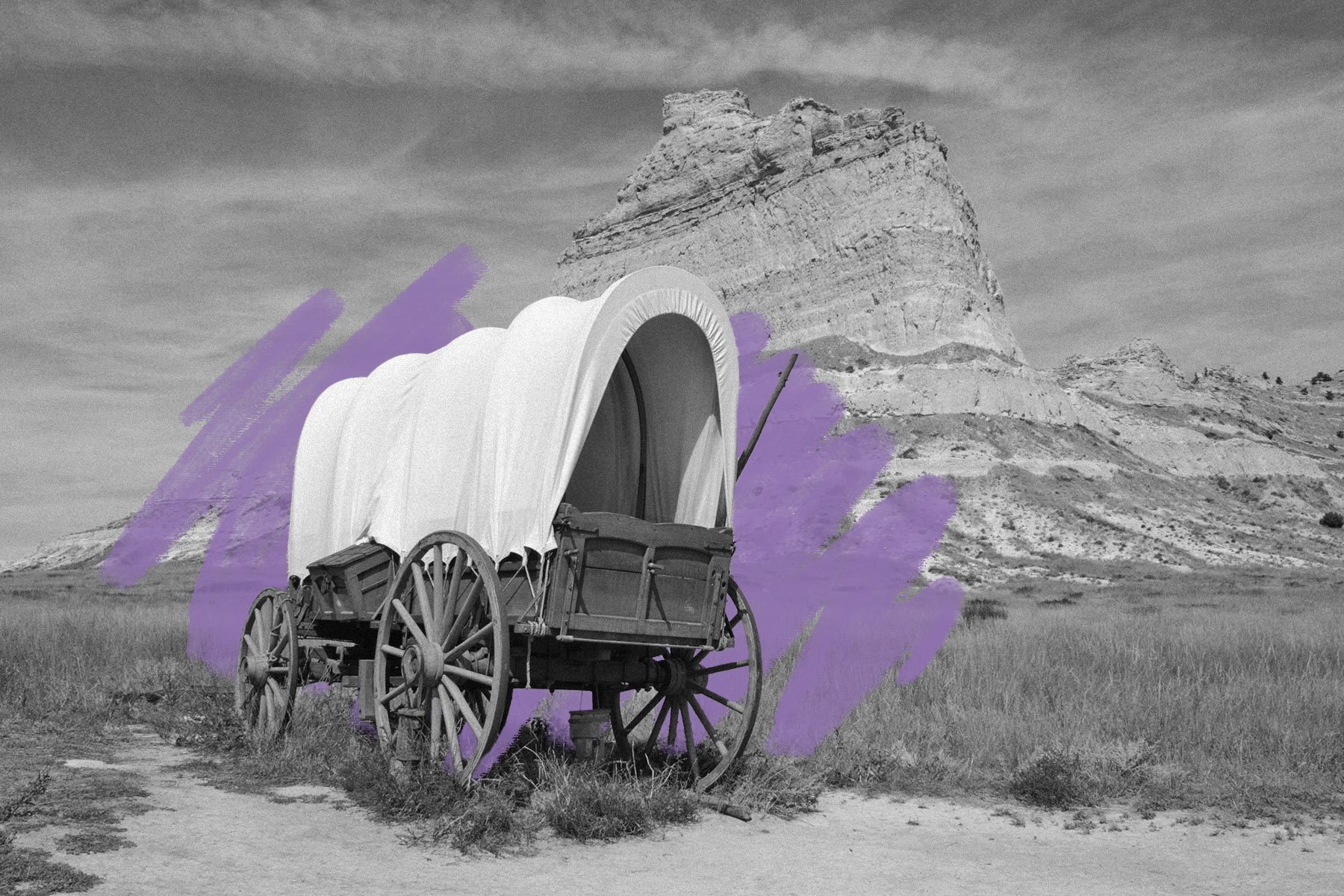Wagon wheel tracks from the Oregon Trail are still visible.
In the grand scheme of world history, the Oregon Trail era wasn’t all that long ago, and the physical marks the wagons left behind are still very much visible in Missouri, Kansas, Nebraska, Wyoming, Idaho, and, of course, Oregon. More than 300 miles of impressions left behind from heavy wagons can still be seen, sending modern-day travelers back in time to the mid-1800s, when hundreds of thousands people made the treacherous journey to America’s West Coast.
The famed path from Missouri to Oregon pushed through many different types of terrain, so each collection of tracks is unique. Some are wide, shallow indentations worn down in soft earth, while others still show individual wheel tracks. In harder terrain, such as sandstone, deep, angled impressions are still visible, some up to 5 feet deep. In a few places, the tracks tell their own story: Ash Hollow State Park in Nebraska still shows deep erosion from a hilly stretch of trail where travelers had to lock their wheels to keep from going too fast along the steep grade.
Following the tracks can give modern-day road trippers a sense of the route that settlers took westward; helpfully, several highways are in roughly the same place as the original trail, so you never have to miss a historic park or roadside marker. Along I-84 in Oregon, even the rest areas have interpretive signage and, occasionally, yet more wheel tracks to transport you back in time.







